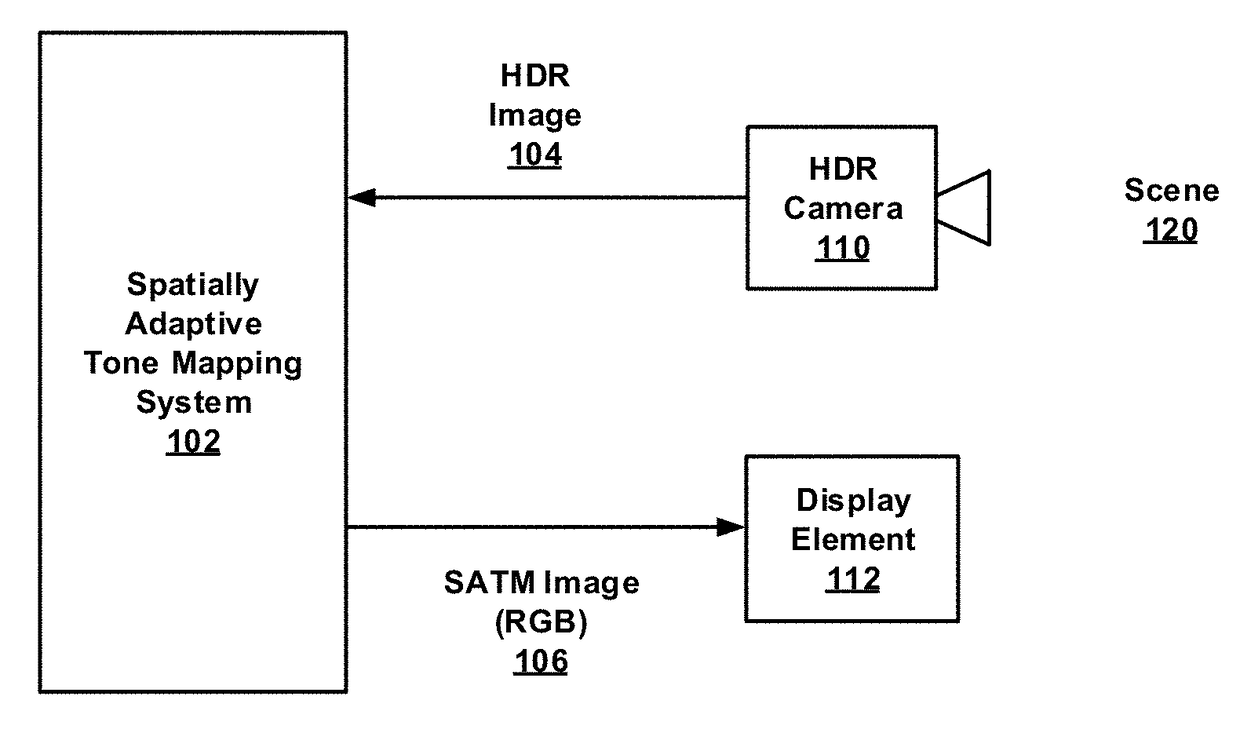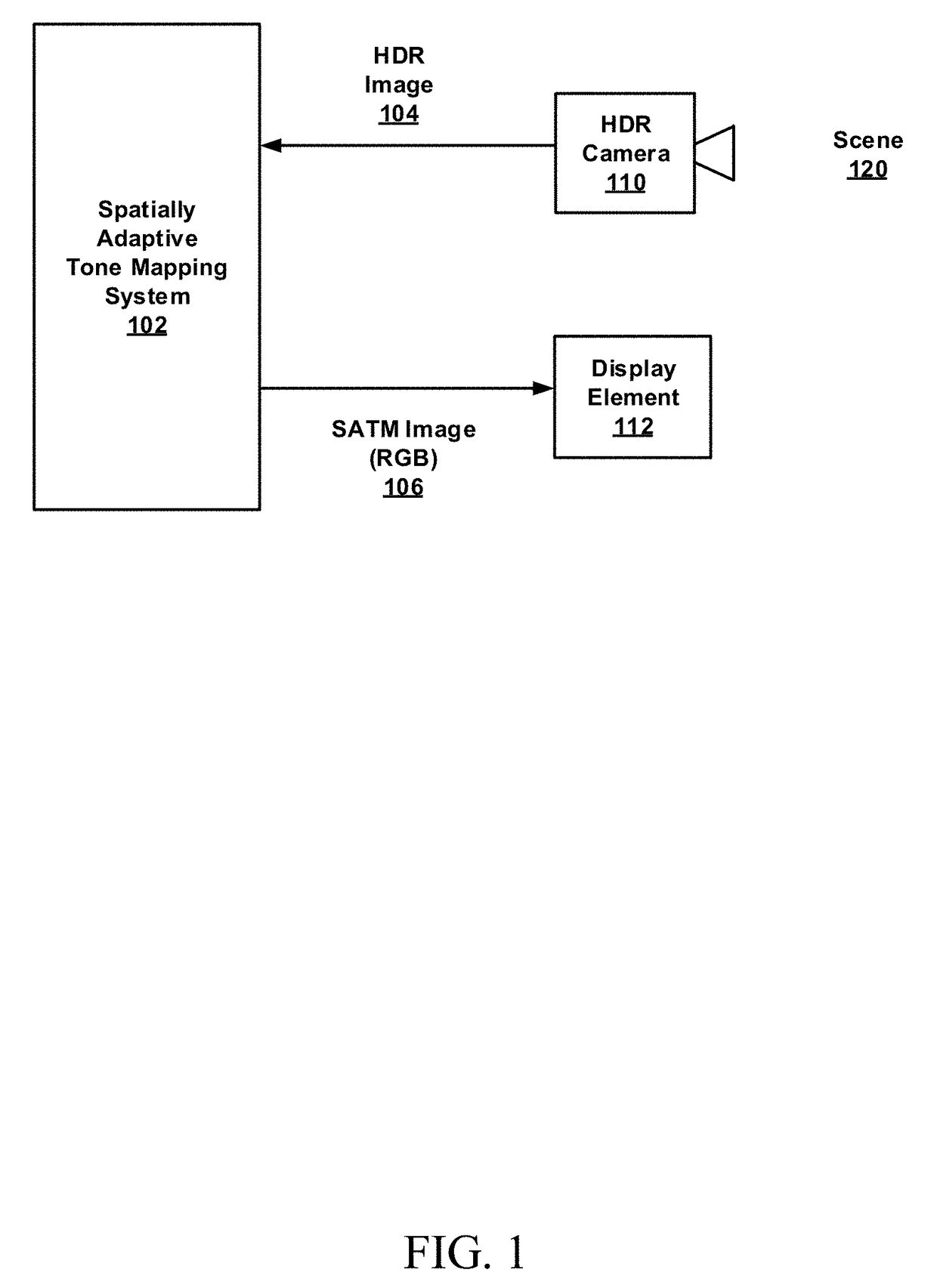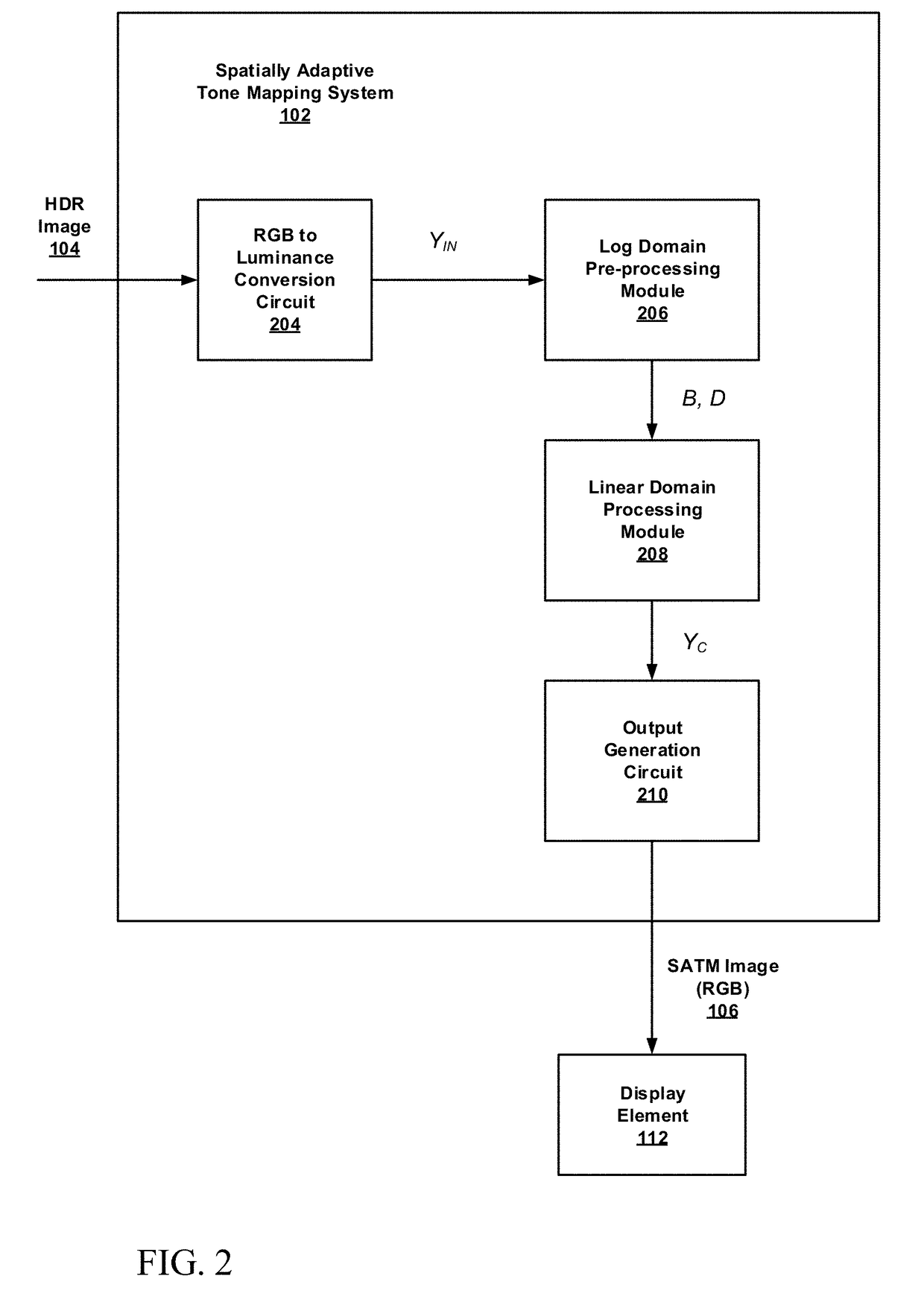Brightness control for spatially adaptive tone mapping of high dynamic range (HDR) images
a high dynamic range (hdr) image and tone control technology, applied in image enhancement, image analysis, instruments, etc., can solve the problems of loss of image detail, unable to reproduce such hdr images in a visually acceptable format, and most display devices have much more limited dynamic rang
- Summary
- Abstract
- Description
- Claims
- Application Information
AI Technical Summary
Benefits of technology
Problems solved by technology
Method used
Image
Examples
example 2
[0085 includes the subject matter of Example 1, further comprising generating compressed luminance data based on a multiplicative product of the compressed linear domain layers.
example 3
[0086 includes the subject matter of Examples 1 or 2, further comprising generating a compressed output image based on scaling of red-green-blue (RGB) data from the received image by a ratio of the compressed luminance data to the luminance data from the received image.
example 4
[0087 includes the subject matter of any of Examples 1-3, wherein the statistics associated with brightness are based on an average of samples of the adjusted log domain base layer.
PUM
 Login to View More
Login to View More Abstract
Description
Claims
Application Information
 Login to View More
Login to View More - R&D
- Intellectual Property
- Life Sciences
- Materials
- Tech Scout
- Unparalleled Data Quality
- Higher Quality Content
- 60% Fewer Hallucinations
Browse by: Latest US Patents, China's latest patents, Technical Efficacy Thesaurus, Application Domain, Technology Topic, Popular Technical Reports.
© 2025 PatSnap. All rights reserved.Legal|Privacy policy|Modern Slavery Act Transparency Statement|Sitemap|About US| Contact US: help@patsnap.com



